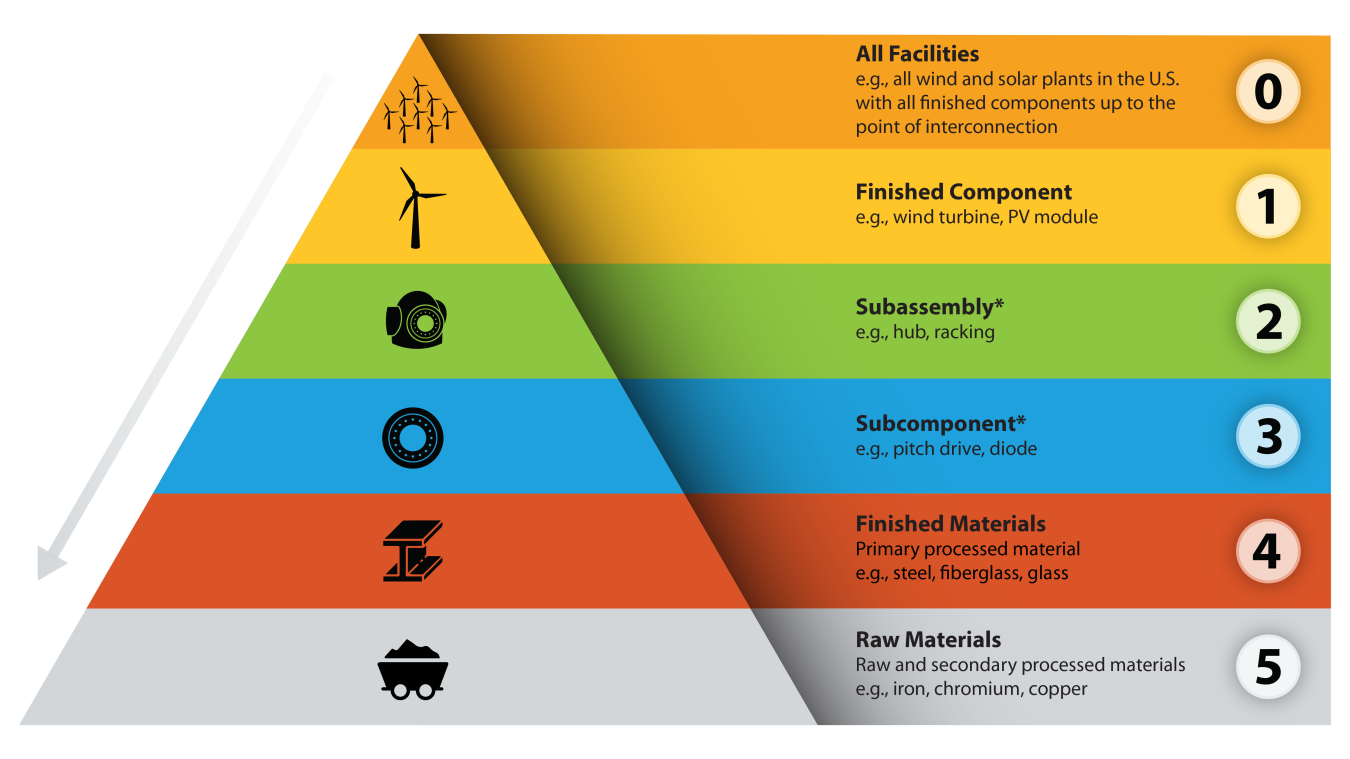The new Renewable Energy Materials Properties Database and accompanying reports could help developers, utilities, and other stakeholders understand how global materials supplies might impact future development of wind energy.
Wind Energy Technologies Office
August 15, 2023To meet the growing energy demand, significant expansion of wind energy is needed. But constructing these wind energy facilities requires more than just ample wind. Energy technologies are built from a variety of raw materials, like concrete and nickel. And supplies of some of those materials are not as plentiful as the wind that fuels the power plants.
Today, the U.S. Department of Energy (DOE) released a first-of-its-kind database that catalogs specific materials, such as minerals and other basic components, used to build wind turbines, as well as solar panels.

The Renewable Energy Materials Properties Database includes information about the availability, country of origin, physical properties, and significant uses of materials that make up wind and solar facilities.
Alongside the new Renewable Energy Materials Properties Database (REMPD), researchers at DOE’s National Renewable Energy Laboratory (NREL) released a summary report and in-depth analyses to help developers, utilities, and other stakeholders understand how current and future wind energy development might affect global material supply and demand.
The NREL report Materials Used in U.S. Wind Energy Technologies: Quantities and Availability for Two Future Scenarios evaluates how U.S. wind energy demand for certain materials compares to current domestic and global availability and recommends ways to alleviate pressure on supply chains by increasing recycling or using readily available alternative materials.
“This comprehensive, first-of-its kind database helps identify possible future supply chain challenges, and armed with this information, we can proactively develop solutions and accelerate deployment,” said Patrick Gilman, program manager in DOE’s Wind Energy Technologies Office.
The report computes the type and quantity of materials, like carbon fiber, the country would need to construct enough wind power plants in their two development scenarios, which both span from 2020 to 2050.
Key Findings and Recommendations
A key finding of this report is that supplies of carbon fiber, which provides strength and stiffness for wind turbine blades, may need to increase to support accelerating wind deployment. Carbon fiber supplies are not only limited; they are also in high demand for other products from airplanes to sports equipment. With accelerated wind energy growth, carbon fiber demand could exceed global supplies.
Rare earth elements used in some wind turbines, like neodymium, dysprosium, and praseodymium, are vulnerable to supply chain disruptions. Production of rare earth elements is highly concentrated, with close to 60% originating in a single country (China). Refining of rare earth ores into metal is even more concentrated, with about 80% of current U.S. rare earth element supply imported from China. In addition, they are also in high demand for use in cell phones, radar systems, and many other electronics.
Demand for nickel and electrical steel for U.S. wind energy deployment could exceed 5% of global production. Although 5% may not seem like a lot, it represents a more than 5 times the domestic production of these materials in 2020. Under the High Deployment scenario, wind-energy-related demand for additional materials could be significant relative to domestic production, with demand for aluminum, copper, and cobalt surpassing 20% of 2020 U.S. production.
But it’s not all bad news. The authors found that, through 2050, annual demand for most materials used in wind turbines would still require less than 5% of what the world produces in a year.
“There are a few ways the country could ensure demand won’t exceed supplies,” said Gilman. “We could increase domestic production of, say, carbon fiber and other high-demand materials. We could use or develop more readily available substitutes for these materials. We could diversify our import sources. And we could build a more robust reuse and recycling, which would allow us to recycle and reuse more materials.”
The authors also suggest other innovative options to reduce pressure on some high-demand materials. Alternatives to permanent magnet generators, for example, include hybrid or superconducting generator designs.
Additional Evaluations
NREL researchers also released the report Large Castings for Wind Turbines, using the REMPD to quantify how many more hubs and bedplates—two large cast iron components used in wind turbines—the country would need to meet the growing energy demand. Today, the United States imports and installs about 5,000 of each of these components a year. But the wind energy industry will need 12,000–20,000 annually in the coming decade. Developing domestic production could be one way to keep pace with this growth.
Currently, the REMPD focuses on the U.S. wind and solar energy industries, but the database has the potential to expand by adding other renewable energy technologies, like geothermal plants and battery energy storage systems, as well as information about environmental impacts.
“The database can help us better understand the constraints and vulnerabilities associated with the materials needed to meet the growing energy demand,” said Gilman.
Explore the Renewable Energy Materials Properties Database.
The team behind the report and the database includes experts from DOE’s National Renewable Energy Laboratory, which led the effort, DOE’s Wind Energy Technologies Office and Solar Energy Technologies Office, which funded the project, and Oak Ridge National Laboratory, Sandia National Laboratories, Lawrence Berkeley National Laboratory, and Arizona State University.

